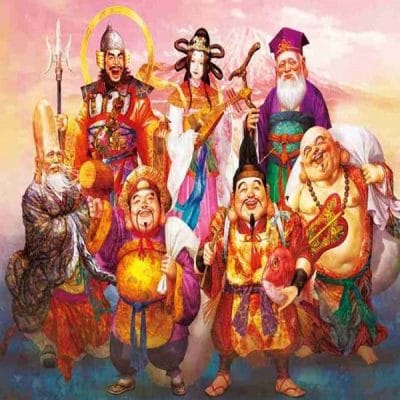
As we already know, Japan ranks as one of the countries with the highest following and devotion to mythology. Legends in which spirits, ghosts, demons and even unknown beings meet. There are many varieties of Japanese mythological animals that, for centuries, have marked the life of this population, we can even say of the current society, since there are many followers of these beings.
The legends that are narrated where these mythological beings appear, range from the creation of the archipelago, through the feats achieved by the warriors and ending in the lives of the most humble people. These stories have reached the current Japanese society thanks to the small and big screen, due to the manga.
Knowing Japanese mythology
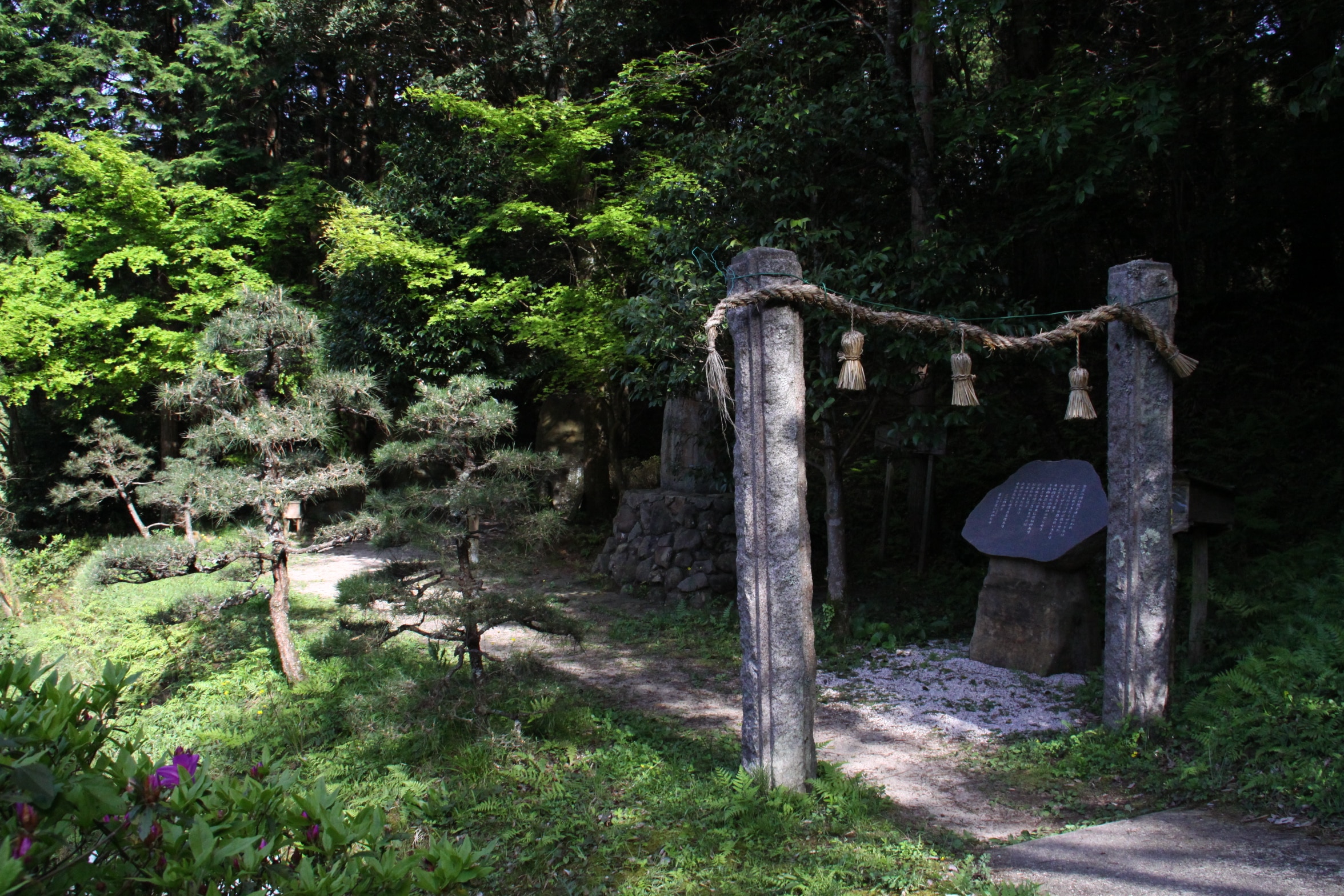
en.wikipedia.org
According to the oldest book on the history of this country, the name given to the underworld is Yomi-no-kuni, it is a place where the souls of people who have died are foundaccording to Japanese culture.
In Japanese mythology, Yomi is not known as a place where eternal punishment is lived, not torture forever.. It is a place, where people who have passed away wander for life living an existence in a darker dimension where the soul lives darker moments.
The origin of the representation of Yomi, took place in the ancient tombs of the feudal era. In them, the lifeless bodies were deposited so that they would decompose over time. A curiosity is that, in Buddhist mythology, Yomi was also considered one of its hells.
Yomi located underground, is part of a set of three zones; from a region called Ashihara no Nakatsukuni, that is, the central land of the cane plains, another located in the sky and which is called Takamanohara, which means the high celestial plain, and finally, Yomi no Kuni, an area located underground and which is known as the land of Yomi.
Putting aside the Yomi no Kuni, we are going to something much darker and infernal, what for the Japanese Buddhists was the underworld, we speak of the Jigoku. It is a chilling world, surrounded by flames, where all the demons were found and where inhuman punishments were imposed on sinners to make them pay.
Four Sacred Japanese Mythological Animals
As we mentioned at the beginning of this publication, a great variety of mythological beings are known in Japanese culture, but these four that we will see next, are the main ones of his mythology. They are in charge of protecting each of the cardinal points.
In Japanese mythology, These four beings are known by the names of; Genbu, Suzaku, Byakko and Seiry. As we have indicated, they are primarily responsible for protecting the four main points of the city of Kyoto. Do you want to discover more about each of them? Take a seat let's get started.
genbu
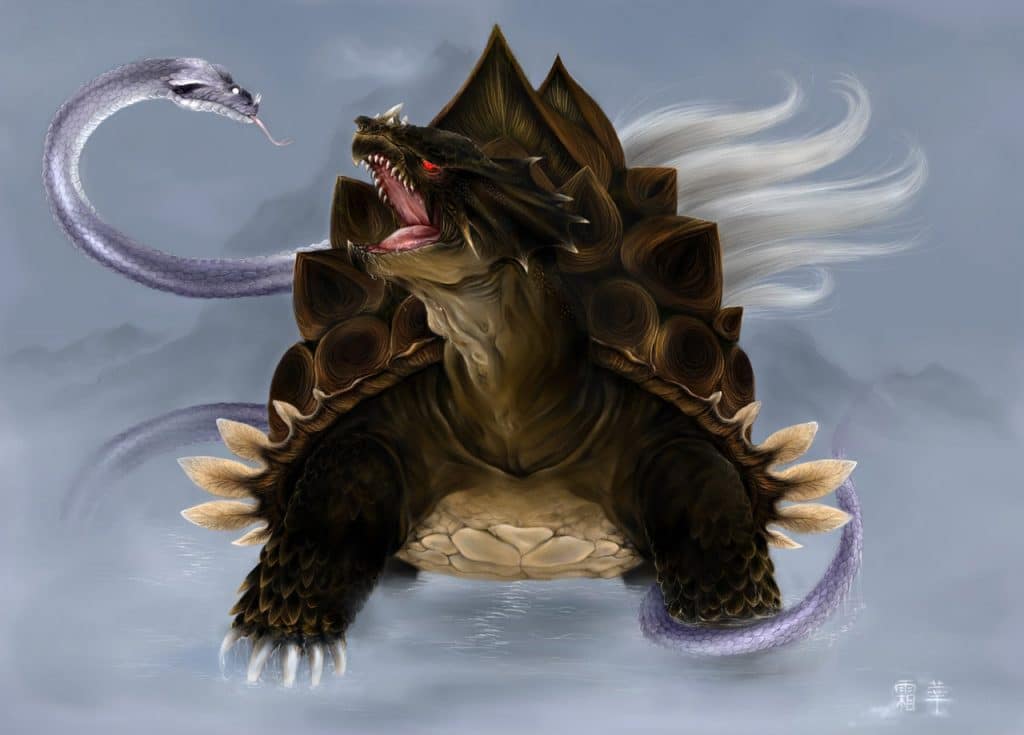
mythology.info
This mythological being is the god that represents the cardinal point of the north. The aspect with which it is represented is in the form of a turtle with a coiled snake. The symbol that represents this god is that of the earth and winter.
The origin of Genbu is that of a black tortoise or also known as a northern tortoise. Japanese legends say that, due to the influence of China, turtles are considered a symbol of honor, but, once The legend gained strength telling that the female turtles were not able to join the males, but with other animals, the snakes.
Due to the story told by said legend, Women who had relationships outside of their marriage began to be called turtles, so the idea that these animals represent honor and fortune was disappearing.
Suzuki
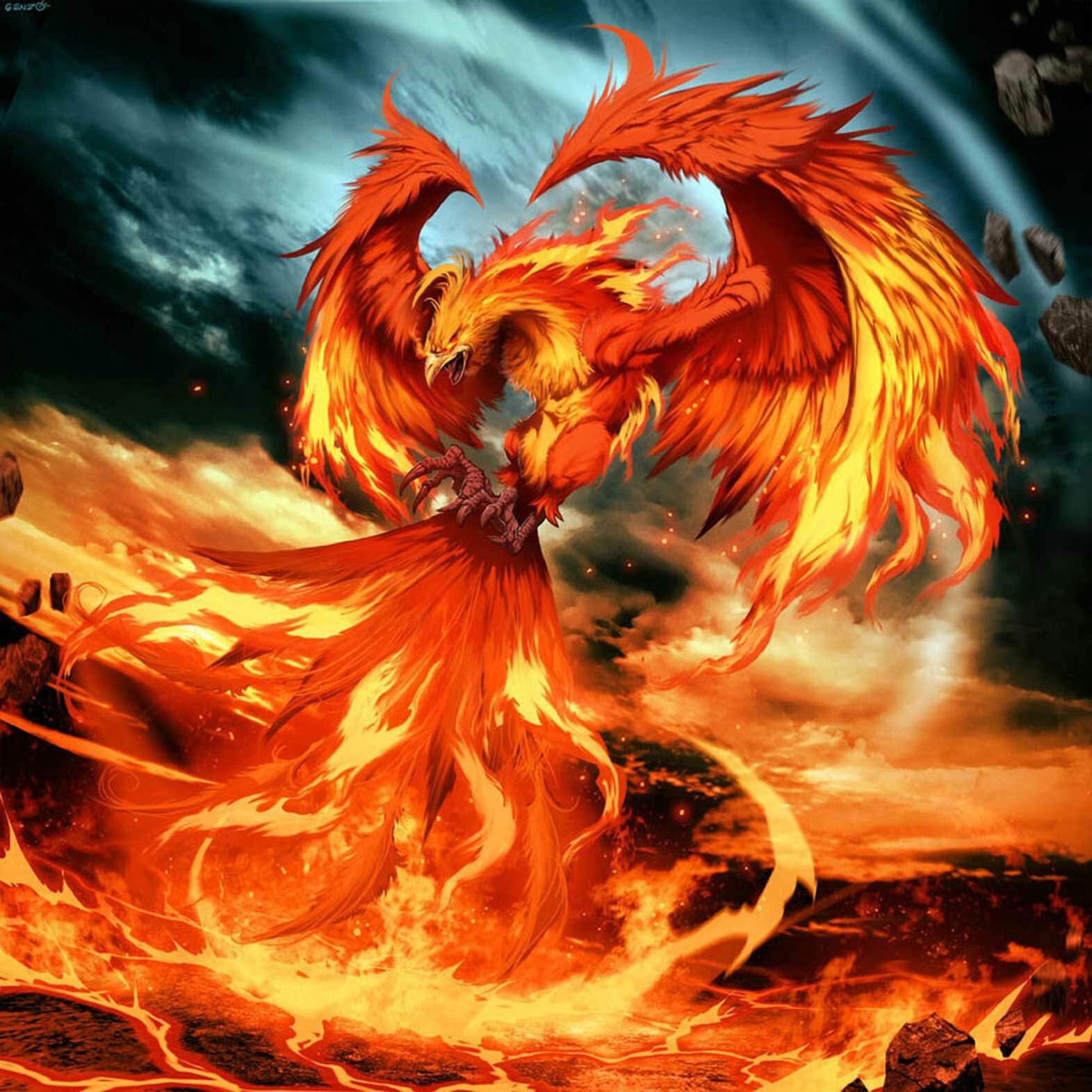
aminoapps.com
Let's talk about the Japanese mythological animal with greater force. In this case, this sacred animal is the representation of the south and summer as a season. It appears with a phoenix bird appearance, in which large flames stand out around the figure, so its element is fire.
The origin of this sacred being, as in the previous case, comes from China, where it is known under the name of the vermilion bird. A very representative characteristic is that this being is the only one that has a constellation.
Seiryu
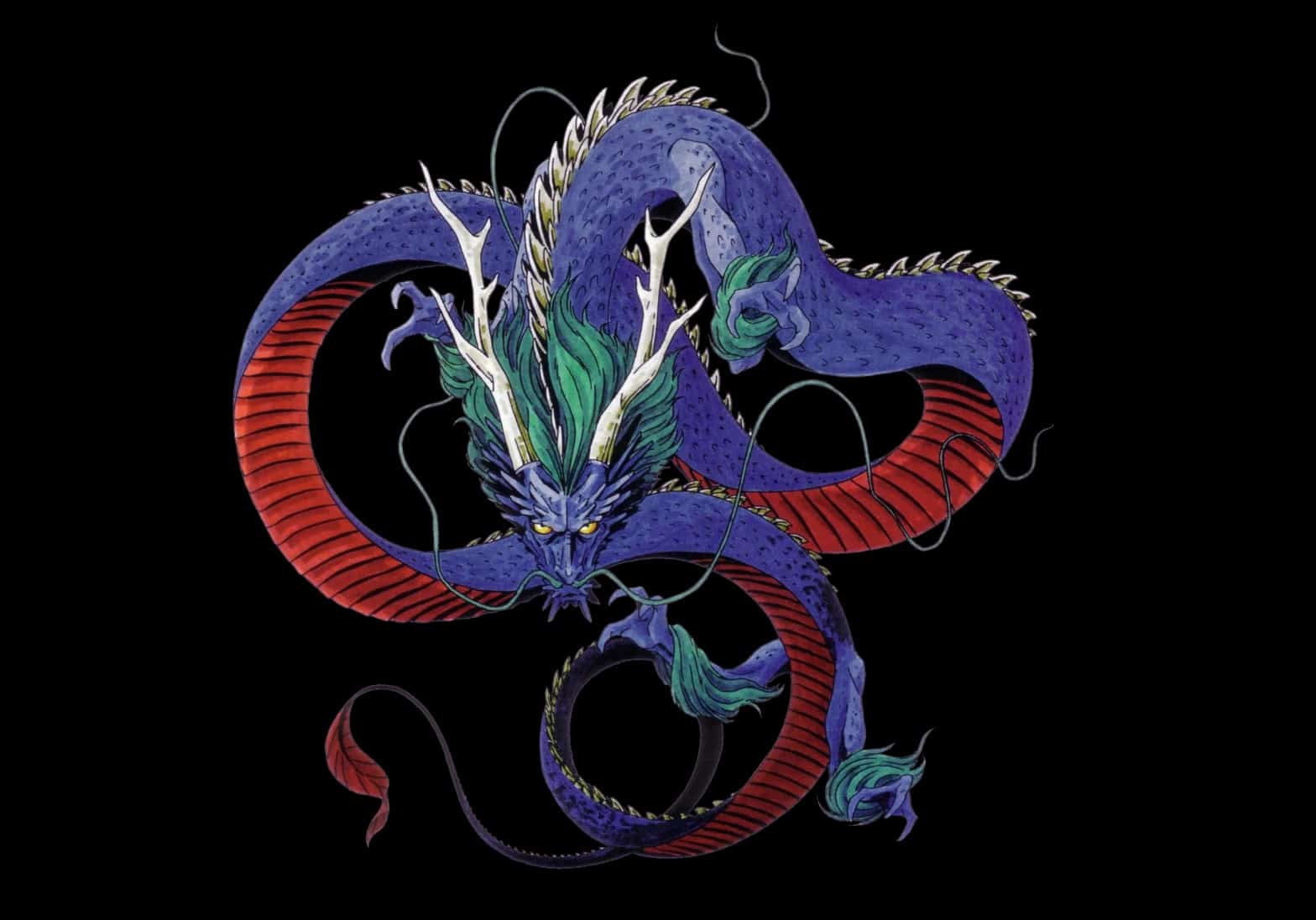
megamitensei.fandom.com
The cardinal point of the city that is protected by this being is the east. It is represented by the figure of a blue dragon whose element is water and the season of spring.
As you can already imagine, its origin takes place in China, where it is known as the Azure Dragon. In the country of Japan, there is a temple where a blue dragon can be seen at its entrance. It is said that the water must be drunk at midnight and that this must be done every year. This is taken as a kind of ritual and worship of this sacred figure.
Byakko
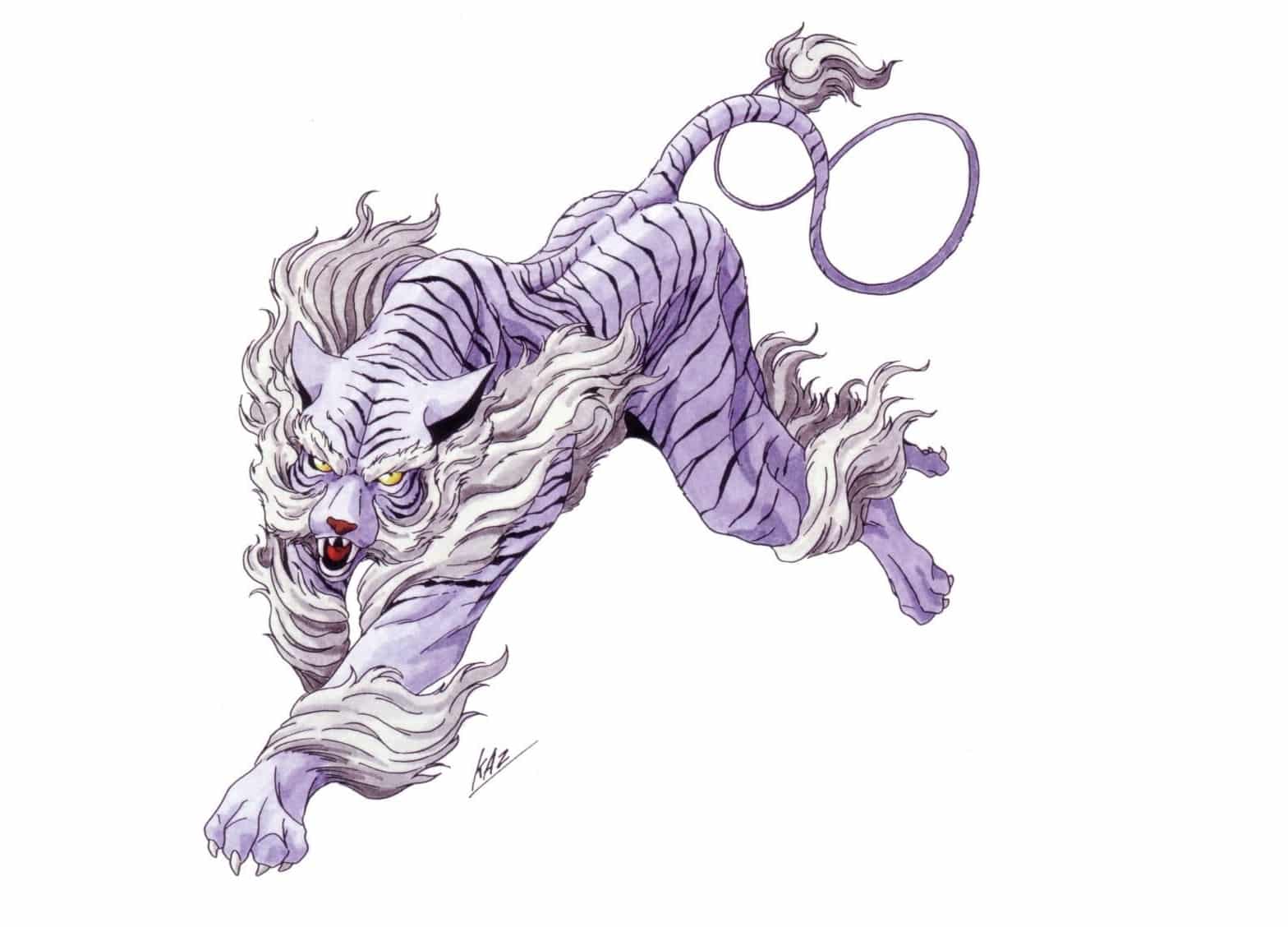
mythology.info
We bring you the ultimate holy figure, the god of the north. The appearance with which he is represented is through the figure of a white tiger, which is a symbol of the wind and is associated with the autumn season.
Since many years, it has been believed that the tiger is a sacred animal, as well as being considered the king of beasts. According to certain legends, when this animal reaches 500 years, the fur on its tail begins to turn white. In addition, it is said that, if an emperor exercised his power in a peaceful and respectful manner, a white tiger could appear to him on certain occasions.
Other Japanese mythological animals you should know
These four sacred beings that we have mentioned in the previous section are not the only ones that appear in the stories of Japanese mythology. There are many more, the figures that can be named in this mythology, then we will discover some of them.
Kitsune

It is also known as the nine-tailed fox.. A very significant Japanese mythological creature in this culture, since the fox for them is an animal with great intelligence and cunning. This being has magical powers which increase over the years, as does its number of tails, reaching a total of nine.
Nekomata
In this case, We are talking about a mythological being that is represented through the image of a cat with supernatural powers. It is similar to a cat known as Bakeneko, we do not mean a ghost, but a living animal. In this case he has supernatural abilities, but at the same time he can perform human actions.
Nue

naruto.fandom.com
Creature, which can be found in Japanese folklore. The appearance with which we can find this mythological animal is a somewhat strange mixture; monkey head, tiger paws and snake tail. It is capable of transforming into a cloud and causing nightmares or curses to anyone.
Issie
Japanese legends say that Issie was a mare who lived with her little foal, but when it was stolen by a samurai near the lake, she did not think twice and jumped into the water to find it. jumping into the water, the mare was transformed into a kind of large reptile and it is said that it usually comes out of the depths to settle on the shores of Lake Ikeda.
aosaginohi
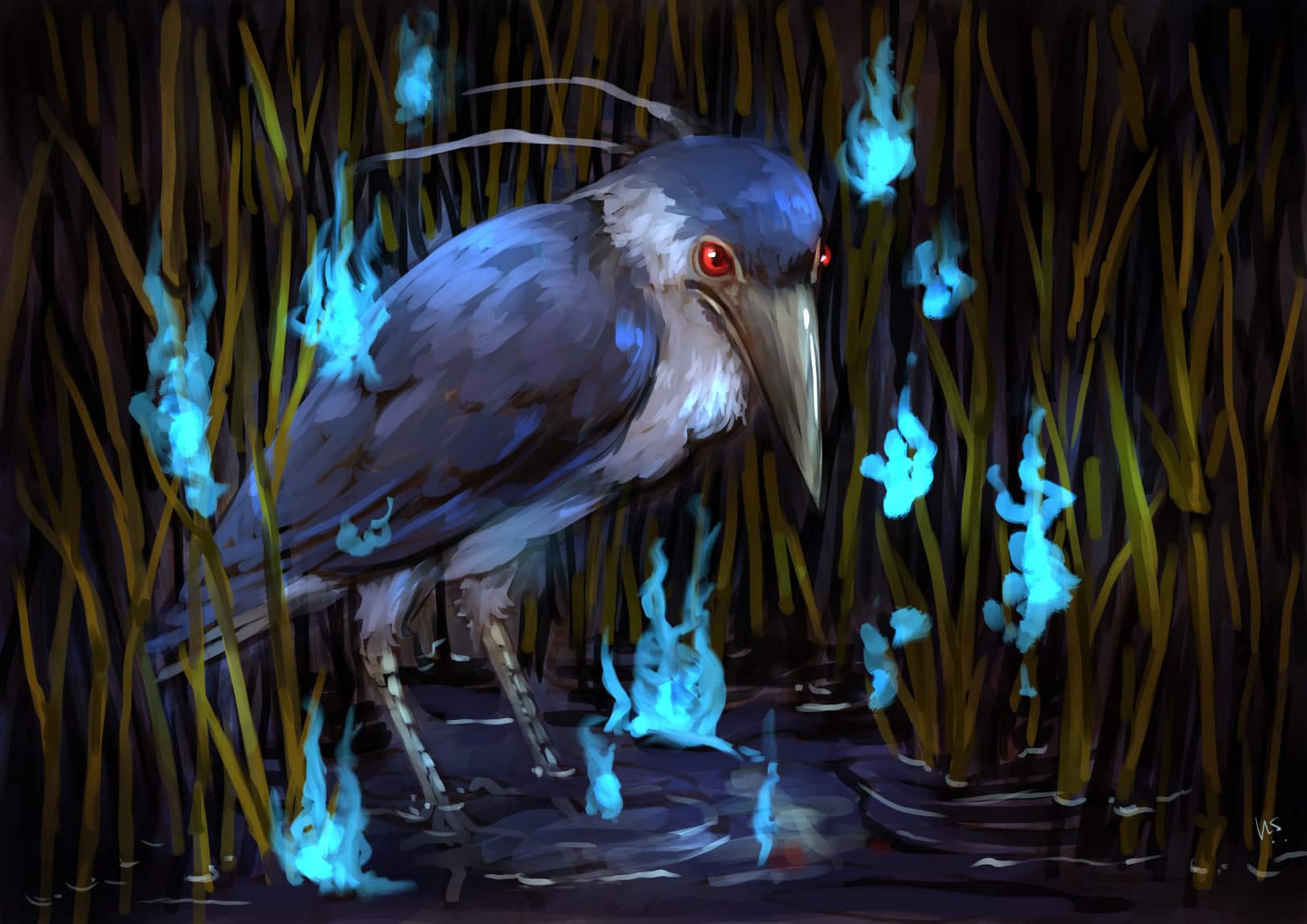
artstation. com
Somewhat mysterious animal creature, within this mythology of which we are talking. His representation is similar to a heron, but whose main difference is that this being is covered by a ball of fire that appears when you start the flight.
hibagon
Creatures that we can find in Japanese legends and which have a shape similar to that known as big feet. It can be defined as a mix between gorilla and human being, with a huge size, which is capable of ending the life of any being with a single movement.
Namazu
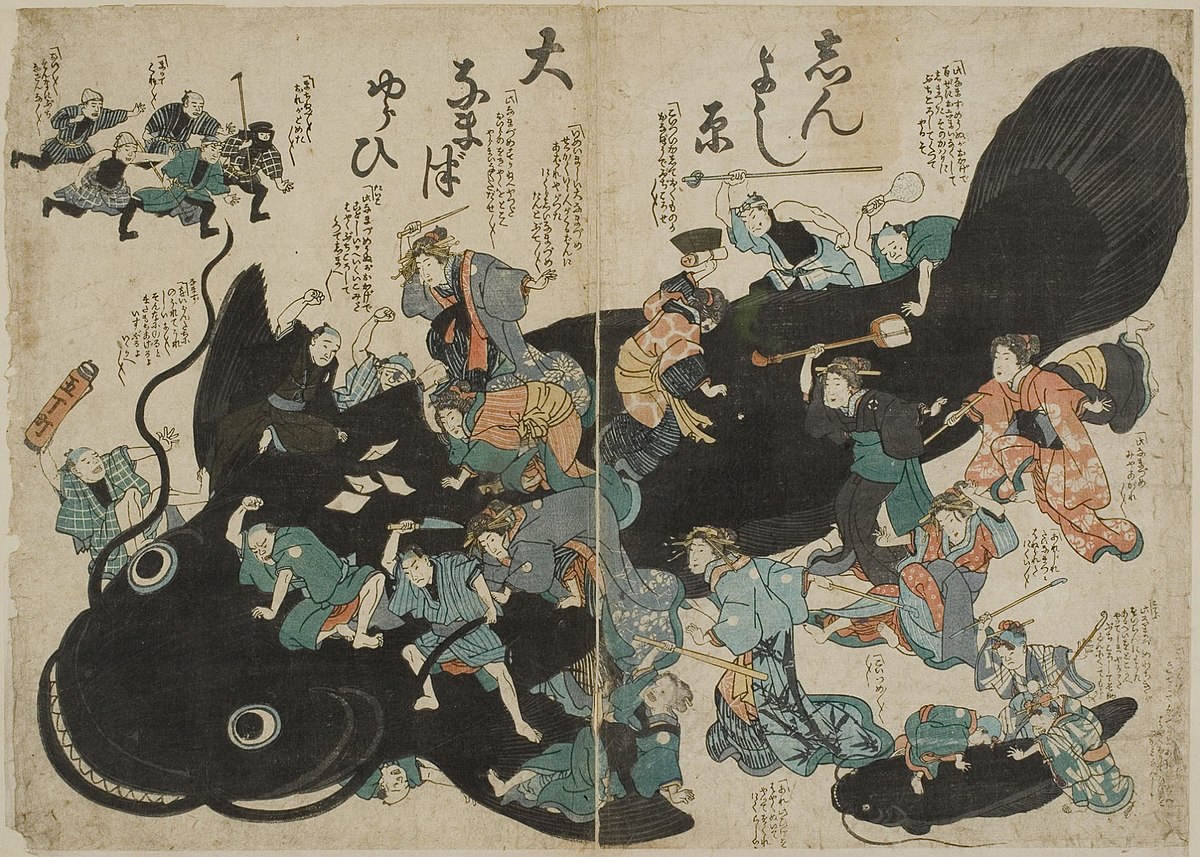
en.wikipedia.org
In Japanese mythology, this fantastic animal is a large catfish that lives in the depths and which, causes earthquakes every time it moves. This is due to his great strength, which leads to his being protected by a guardian that keeps him immobilized.
Kuda-gitsune
Finally, we describe this new being within the classification of Japanese mythological animals, Kuda-gitsune, a kind of fox, but with the size of a rat, which can be found inside the pipes. If this being manages to be trained, its owner will receive the benefit of having all the power of this small animal.
So far, our compilation of Japanese mythological animals. Throughout this publication, we have been naming some of the most representative and well-known mythological creatures of this culture.
We hope that you have learned something new about this society and about its peculiar beliefs and creations. As has been discovered, Japanese culture has a wide and rich universe of fantastic beings.
If you want to know what else is around Japanese culture, we leave you this link to a publication where we introduce you to the different Japanese gods, as well as a little history about each of them.
